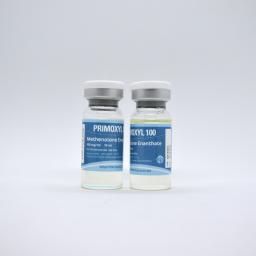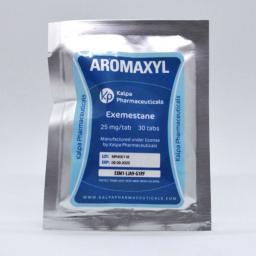The assessment of the menopausal woman is primarily the assessment of the well woman, who may be symptomatic or coincidentally, with the menopausal transition may have risks or medical disorders impacting on her wellbeing.
Indications for consultation
The reasons the woman consults a medical practitioner must be carefully listened to.
The woman may be seeking:
1. Symptom relief
2. Information
3. A preventative health care plan
4. Update of her medication
5. Therapeutic management for side effects from previously prescribed medicines
6. Support or counselling during a major life stress
Sensitivity to issues
In taking a history and performing an examination, the doctor must be aware and sensitive to many issues including:
1. The age of the woman.
2. Her cultural background including which country she was born in, how long she has been in Australia, and her language expertise.
3. The status of her menopause, e.g. premature menopause at 32.
4. Previous experiences with other doctors, either positive or negative (the dissatisfied woman will be keen to find a sympathetic doctor who will listen to her).
5. The amount of time the doctor has available – if inadequate explain to the woman and, if possible, make a further appointment for a long consultation.
6. How comfortable the doctor feels about managing patients of menopausal age, and the doctor’s education and socio cultural beliefs about the menopausal experience.
7. Specific fears the woman may have about the menopause and treatments including HRT, such as a fear of breast cancer and weight gain.
History taking
In taking a medical history, it is important to elicit the appropriate information:
1. Current Situation
- Presenting symptoms; vasomotor, urogenital, psychological, social, musculoskeletal, sexual
- Menstrual status
- Patterns of vaginal bleeding
- Urinary or bowel symptoms including incontinence
- Contraceptive practice
- Lifestyle behaviour e.g. dietary patterns, exercise routines
- Cardiovascular risks e.g. obesity, smoking
- Osteoporosis risks e.g. 2º amenorrhoea, smoking, corticosteroid use
- Time of previous pap smear, mammogram, lipid profile or bone density
2. Past medical and surgical history, particularly:
- Menstrual cycle history
- Obstetric and gynaecological history
- Cancer history particularly breast, uterine, ovarian or bowel
- Diabetes and/or thyroid disease
- Previous fracture
- Irritable bowel syndrome and other GIT disorders
- Contraceptive problems
- Thrombo-embolic events
- Hepatic and renal disease
3. Family history, in particular:
- Any familial disorders
- Cancers, especially breast, uterine, ovarian and bowel
- Cardiovascular disease, IHD, MI, HT, thrombo-embolic events
- Osteoporosis and/or fracture
- Diabetes mellitus
4. Medications being taken including prescriptives such as H2 antagonists and all non-prescriptive medicines including vitamins and herbal products
5. Midlife issues including:
- Attitudes towards ageing
- Partnership status
- Partners/husbands midlife health and wellbeing
- ‘Empty nest’ or ‘full nest’ household
- Elderly parents or relatives
- Employment status/financial position
Physical examination
The examination of the woman should include the:
- Cardiovascular system examination
- Breasts examination
- Gynaecological examination, including a Pap smear if greater than two years has lapsed, if there is abnormal vaginal bleeding or a previous abnormal smear. A bimanual examination should be performed to exclude pelvic pathology such as ovarian cysts or fibroids, especially following hysterectomy where the ovaries have been conserved
- Evaluation of thyroid status
- Specific system examination, depending on the symptom presentation
Investigations
Some investigations may be necessary to perform for diagnosis or to help in formulating a treatment plan.
Here are the most commonly used investigations and their indications.
The Pap smear and mammography should be mandatory routine screening investigations for all women over forty:
1. Pap smear
- Every two years
- If had previous abnormal smear (dysplasia or HPV changes) within the last two years
- A vault smear every 2 years following hysterectomy if the woman has ever had an abnormal pap smear or cancer of the cervix or uterus
- If presents with abnormal vaginal bleeding
2. Mammogram ± breast ultrasound
- Every two years over the age of 50 years and probably between 40-50 years particularly if post menopausal
- If any breast abnormality is found on examination
The following investigations are not mandatory and should be chosen judiciously depending on the woman’s history and examination.
3. Hormone levels
FSH/Oestradiol levels:
- Have limited use because of the variability day to day in the perimenopause (best taken in early follicular phase i.e. day three of cycle to assess reduced ovarian reserve. E2<150pmol/l with FSH>10IU/l).
- On oral therapy are inaccurate and should not be used as a guideline for determining dosages.
- Where there is doubt in diagnosis e.g. after hysterectomy with no subsequent menstrual marker.
- FSH may be helpful in determining between premature menopause and secondary amenorrhoea in the under – 40 age group.
- To track absorption where implant therapy is used, also with implant tachyphylaxis and where absorption with patch or gel use is concerned.
May be appropriate when symptoms of loss of energy and sexual function.
- Measure in the morning and after day seven of the cycle; include total sensitive testosterone, and Sex Hormone Binding Globulin (SHBG) and free testosterone to evaluate non – SHBG bound level. A “sensitive” testosterone level may reflect the androgen status more accurately.
Thyroid Stimulating Hormone:
- Indicated where there are symptoms of thyroid dysfunction or palpable thyroid, which may manifest around the time of the menopause.
4. Lipid profile & fasting glucose
- Especially if risk factors or family history
5. Coagulation studies
- Where past history of thrombo-embolism, particularly if spontaneous and/or less than 40 years.
- Where family history or known familial disorder.
6. Full blood examination, iron studies
- Where abnormal bleeding, especially menorrhagia.
7. Vaginal ultrasound
- To assess endometrial thickness where there is abnormal vaginal bleeding:
>4mm thickness in the post menopausal woman requires endometrial sampling either by endometrial biopsy or hysteroscopy and curettage. - To exclude endometrial pathology such as polyps or submucous fibroids.
- To exclude pelvic pathology such as ovarian cysts or fibroids.
Referral to a gynaecologist is appropriate for further investigations such as hysteroscopy and endometrial biopsy, where the ultrasound shows an increased endometrial thickening greater than 4mm in the post menopause, pelvic pathology or with any postmenopausal bleeding.
8. Bone assessment
Bone density:
There are different techniques for establishing bone density. The most reproducible form is the DEXA (dual energy X-ray absorptiometry), which scans both the lumbar spine and the femoral neck. The test is indicated:
Where there are major risk factors for osteoporosis:
- E.g. strong family history, previous fracture, history of oral corticosteroid or thyroxine for the treatment of other illnesses.
- Further biochemistry including calcium and 25 hydroxy vitamin D when osteopenia or osteoporosis is detected on bone density.
- Urinary or serum bone turnover markers are still controversial, mainly used for experimental trials and are not recommended routinely. Henry noted that this dot point could be worded a little better.
9. Urodynamic Assessment
Where there is a history of stress and or urge incontinence, to determine the severity of the incontinence. The result will aid in planning and managing the symptom.
Diagnostic categories
The woman being assessed will fall into a number of diagnostic categories from which a management plan may be developed.
1. Symptoms of the menopause
2. Abnormal vaginal bleeding
3. Contraceptive requirements
4. Breast abnormality, such as a specific lump, cystic breasts
5. Sexual dysfunction
6. High fracture risk
7. Cardiovascular risks
8. Incontinence – urine or faecal
9. Psychosocial problems.
The diagnostic category or categories reached after a thorough assessment of the menopausal woman will determine how to develop a management plan.
Management planning
In every case the woman should be advised about improving her lifestyle by having a healthy diet, maintaining a consistent and individually appropriate exercise program and managing stress. Smoking is particularly associated with postmenopausal morbidity and mortality. Alongside lifestyle improvements, a therapeutic regimen may be developed which may include non-prescriptive or complimentary therapies as well as prescriptive medicines. Specific therapies or programs will be covered in the other lectures.
Management plans may include:
- Therapy for symptom relief, either hormonal or non-hormonal
- Contraceptive advice
- Preventative therapy e.g. for osteoporosis, including lifestyle, calcium, hormone therapy, vitamin D
- Therapy for osteopenia or osteoporosis, either hormonal or non-hormonal, such as the bisphosphanates, SERMS
- Therapy for present cardiovascular risk e.g. hypercholesterolaemia
- Referral for surgery for either pelvic or breast pathology
- Counselling, either psychosexual or psychotherapeutic
- Assessment of incontinence, referral to pelvic floor rehabilitation physiotherapist
- Lifestyle, dietary, exercise advice as well as giving information or providing educational resources
Regular follow-up, with two visits in the initial six months after commencing a treatment plan, provides an opportunity for both the woman and her practitioner to discuss her progress, side effects to medication or difficulties in management and treatment. Yearly assessments should then occur. If therapy is necessary long term, annual review should occur to re-examine risks and benefits and to discuss any new options.
Conclusion
A thorough assessment of the menopausal woman should culminate in a management and/or treatment plan, outlining to the woman her options so that she may decide on choices to improve or maintain her quality of life, at the same time developing an empathic, communicating and ongoing relationship for the woman with her doctor.
Top Steroid Products for Sale
Testo-C 1250 (5ml)
|
Primoxyl 100
|
Aromaxyl
|


